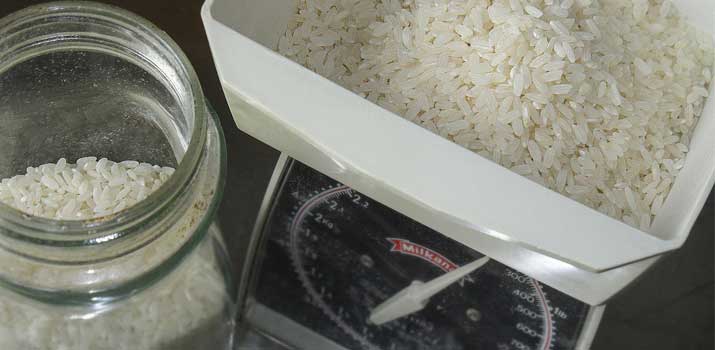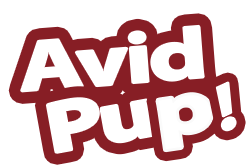
Diarrhea is a messy issue that dogs have to deal with from time to time.
With their inquisitive nature, the occasional bout of indigestion and diarrhea is to be expected.
Dogs are notorious for trying to eat some of the nastiest things. Whether it’s a dead animal or smelly remnants from the garbage can, most dogs just can’t resist.
A little bit of diarrhea is no major cause for concern unless it’s a chronic problem. However, that doesn’t make it any less excruciating for your dog! Doing your best to provide relief is a must!
Most vets recommend switching to a bland diet to treat diarrhea.
These diets contain simple ingredients that won’t agitate the system further, giving your dog all the support they need as they recover.
While pricey bland dog foods do exist, rice works just the same!
Rice is as bland as they come. It’s a perfectly healthy grain that can do a lot to alleviate the symptoms of diarrhea and put your dog on the path to recovery!
Why Rice?
Rice gets a bad rep in the dog community. With the trend of grain-free food being as big as it is, most assume that it’s an ingredient you want to avoid.
The truth is that rice is already in many commercial dog foods.
It’s a valuable source of carbohydrates. As a result, it provides plenty of ongoing energy throughout the day.
Not only that, but it’s a good source of dietary fiber to keep your dog regular.
So, how does it impact diarrhea?
Well, rice has a couple of different benefits.
First, it’s highly digestible. Rice can usually pass through your dog’s system without any trouble.
During bouts of acute diarrhea, they’re already dealing with tons of chaos in there. Having food that they can keep down is a big plus.
More importantly, however, is rice’s soluble nature. It’s a soluble fiber that soaks up liquid as it gets digested.
In the bowels, it can absorb any water that’s causing loose stool.
It helps promote proper stool formation and restore your pup’s feces to its normal consistency.
It’s a win-win all around!
What Kind of Rice Should You Provide?
Before you start adding rice to dog food to stop diarrhea, you need to choose the right kind. Not all rices are created equal.
For the particular task of healing diarrhea, you must choose white rice!
That might come as a surprise, but hear us out!
Brown rice is usually a better choice for its nutritional content. However, it’s also harder to digest. It all comes down to how it’s processed.
Brown rice has a tougher shell where all the nutrients are. In white rice, that shell is removed.
White rice might be less nutritious, but the shell’s absence makes it much softer and easier to process. Plus, it contains more beneficial starches that could improve your dog’s condition.
Now, there are some caveats. White rice has a higher glycemic index. As a result, it has a more significant impact on your dog’s blood sugar levels.
The glucose is converted very quickly, which may lead to an energy spike and subsequent crash.
Foods with a high glycemic index can increase a dog’s risk of diabetes and weight gain. Keep this in mind and speak with your vet about the safety of adding rice to dog food.
If your dog is maintaining a healthy weight, white rice is not an issue. But if they’re already struggling to stay fit, you may want to reconsider.
How Much Rice Does Your Dog Need?
The amount of rice you should provide will depend entirely on your dog’s weight, breed, and activity levels. Not only that, but you will prepare different amounts based on the rice technique you choose.
As a good rule of thumb, provide the same amount of dry rice that your dog eats in dry kibble.
If you provide two cups of food per day, plan to use two cups of dry rice.
Using Rice to Stop Diarrhea
You have to ways to use rice effectively. Both options work well. However, we recommend the first method for most dogs that are healthy.
The second one is ideal for dogs that are on the sensitive side.
The “All-In” Method
With this technique, you’re going to go all-in with the rice. It involves replacing your dog’s entire diet with rice from the jump.
The goal here is to essentially hit “reset” on the gastrointestinal tract.
You’re giving your pup’s system time to recover by minimizing ingredients.
After measuring out the appropriate amount, cook the rice in a large pot. You can cook it according to the instructions on the package.
Make sure that you don’t add any spices or other ingredients.
Once cooled, you can portion out your dog’s meals accordingly. The aim here is to start with a 100-percent rice diet.
As your dog recovers, you can begin to phase in other foods before reintroducing their everyday meals.
On the second day, you can add a couple of tablespoons of plain yogurt. The yogurt will introduce beneficial gut flora to help the stomach recover.
On the third day, try adding boiled turkey or hamburger without any fat.
When you notice your dog’s stool firming up again, gradually add their regular dog food. Start by providing a meal of 25 percent dog food and 75 percent rice.
On the next day, do a 50/50 split. The day after that, do 25 percent rice and 75 dog food.
By that point, your pup should be fully recovered and ready to resume its standard meals.
The “Small-Portion” Method
This method is the opposite of the previous one.
Here, you’ll start with a small amount of rice before building up to a full-rice diet. Another big difference is how you’ll be providing meals.
Instead of two large meals, you must give several smaller meals throughout the day.
The goal is to soak up as much liquid in the bowels as possible.
Prepare the rice according to the package. For the first day, we recommend mixing 25 percent rice with 75 percent dog food. Mix this ratio at the beginning of the day so that you have everything ready. Then, break it up into multiple small meals every few hours.
Repeat this process for the next couple of days until you’re sure that their system agrees with the rice. Then, increase the amount of rice by 25 percent until you’re providing nothing but rice.
As your dog’s condition improves, you can reverse the process and get your dog back to typical food. To do this, follow the same protocol as before.
Add 25 percent dog food and increase the amount over the next few days until they’re eating full kibble meals.
Conclusion
Rice can do a lot to encourage recovery from diarrhea. It can address the problem internally while also helping you avoid problems like dehydration and malnutrition.
Adding rice to dog food is an all-natural fix that’s easy on both you and your dog. Keep an eye on your dog’s condition. If the problem persists, visit your vet as soon as possible for guidance.
Also Read: Best Rated Large Breed Puppy Foods

